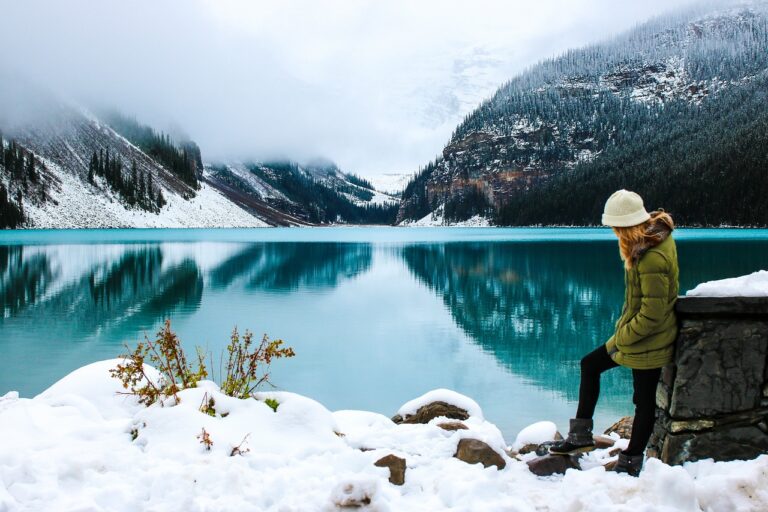What Is the Most Remote Backpacking in the World?
The most remote backpacking destinations in the world are found in regions of extreme climate, rugged terrain, and limited infrastructure, where only the most experienced and well-prepared adventurers dare to venture. Siberia’s harsh wilderness, Papua New Guinea’s last frontiers, the Himalayan outback, Amazonian expanse, and Mongolian steppes offer unparalleled remoteness and adventure. To tackle these destinations, backpackers must possess physical endurance, navigation skills, and cultural sensitivity. Self-sufficiency and logistical planning are vital, as infrastructure is scarce and distances vast. As you set out on these expeditions, you’ll discover untouched beauty, unique cultural heritage, and unforgettable experiences that await those willing to push beyond the boundaries.
Trekking the Siberian Wilderness
Siberia’s vast and sparsely populated wilderness, characterized by dense forests, rugged mountains, and countless rivers, offers a truly immersive and challenging remote backpacking experience. The region’s harsh climate, limited infrastructure, and vast distances between settlements require careful planning, physical endurance, and self-sufficiency. Backpackers must be prepared for extreme temperatures, unpredictable weather, and potential encounters with wildlife such as bears and wolves. Navigation skills are essential, as trails are often non-existent or poorly marked. Despite the challenges, Siberia’s untouched beauty, unique cultural heritage, and opportunities for solitude and self-discovery make it an unforgettable adventure for experienced and intrepid backpackers.
Papua New Guinea’s Last Frontiers
Papua New Guinea’s rugged and isolated terrain, where dense rainforests, towering mountain ranges, and mighty rivers converge, presents a formidable and enchanting destination for remote backpackers seeking an uncharted adventure. This Pacific island nation boasts some of the most inaccessible and untouched regions on the planet, offering a true wilderness experience for those willing to venture into the unknown.
- Trek through the Baliem Valley, a hidden valley surrounded by towering mountain ranges and home to traditional tribes
- Venture into the remote islands of the Bismarck Archipelago, teeming with exotic wildlife and untouched beaches
- Hike to the summit of Mount Wilhelm, the country’s highest peak
- Navigate the mighty Fly River, a lifeline for many remote communities
- Visit the Kokoda Track, a historic WWII battlefield and one of the most challenging treks in the world
Backpacking the Himalayan Outback
How does one prepare for the rugged, high-altitude adventure that awaits in the Himalayan Outback, where towering peaks, ancient trade routes, and isolated villages converge to create a backpacker’s paradise? To tackle this unforgiving terrain, backpackers must acclimate to high elevations by gradually ascending to higher camps. It’s essential to pack layers, as temperatures fluctuate greatly between day and night. A sturdy tent, sleeping bag, and waterproof gear are must-haves. Navigation skills are vital, as trails can be faint and unreliable. Local guides or trekking agencies can provide valuable insights and support. Additionally, backpackers should be prepared for limited access to medical facilities and amenities, making self-sufficiency a top priority. By being well-prepared, backpackers can navigate the challenges and decipher the secrets of this breathtaking region.
Exploring the Amazonian Expanse
While the Himalayan Outback presents a formidable high-altitude challenge, the Amazonian Expanse, with its dense rainforests, meandering rivers, and vibrant indigenous cultures, demands a distinct set of skills and preparations from backpackers seeking to venture into this vast, humid, and often unforgiving environment. To navigate this environment successfully, backpackers must be prepared for:
- Insect-borne illnesses: Take necessary precautions against mosquitoes, ticks, and other disease-carrying insects.
- Water purification: Certify access to safe drinking water through filtration, purification tablets, or boiling.
- Indigenous community engagement: Research and respect local customs, protocols, and environmental regulations.
- River navigation: Develop skills in canoeing, rafting, or other watercraft handling to traverse Amazonian waterways.
- Tropical weather adaptation: Pack light, breathable clothing and plan for frequent rest breaks to avoid heat exhaustion.
Conquering the Mongolian Steppes
Across the vast, open expanses of the Mongolian Steppes, backpackers face a unique set of challenges that demand a distinct blend of physical endurance, cultural sensitivity, and logistical planning. The Steppes’ harsh climate, limited infrastructure, and nomadic culture require careful preparation and adaptability. Backpackers must be self-sufficient, carrying all necessary gear and supplies, while also being respectful of local customs and traditions. Navigation can be challenging, with few marked trails and limited access to maps. However, the rewards are well worth the effort, as the Steppes offer breathtaking landscapes, untouched wilderness, and a glimpse into a unique and ancient way of life. With careful planning and preparation, backpackers can conquer the Mongolian Steppes and experience one of the most remote and unforgettable adventures on the planet.


